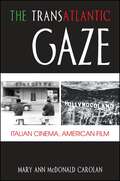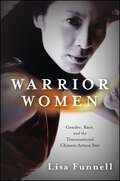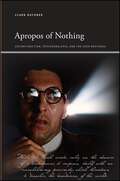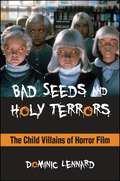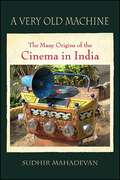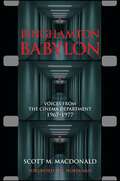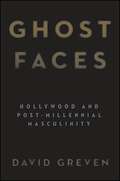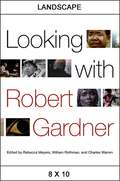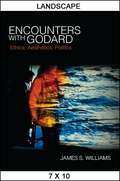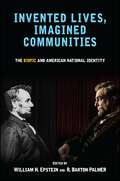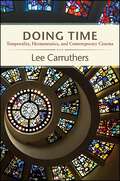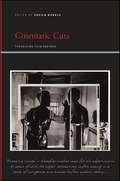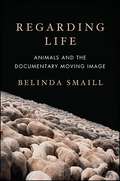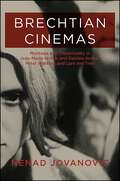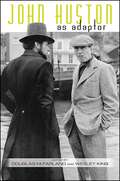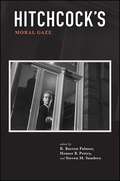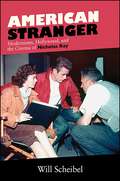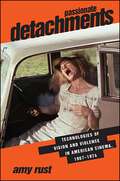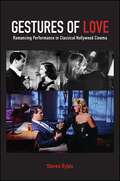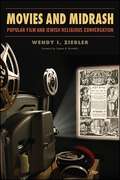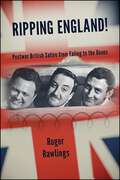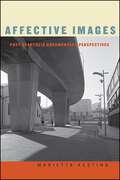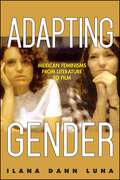- Table View
- List View
The Transatlantic Gaze: Italian Cinema, American Film (SUNY series in Italian/American Culture)
by Mary Ann McDonald CarolanIn The Transatlantic Gaze, Mary Ann McDonald Carolan documents the sustained and profound artistic impact of Italian directors, actors, and screenwriters on American film. Working across a variety of genres, including neorealism, comedy, the Western, and the art film, Carolan explores how and why American directors from Woody Allen to Quentin Tarantino have adapted certain Italian trademark techniques and motifs. Allen's To Rome with Love (2012), for example, is an homage to the genius of Italian filmmakers, and to Federico Fellini in particular, whose Lo sceicco bianco/The White Sheik (1952) also resonates with Allen's The Purple Rose of Cairo (1985) as well as with Neil LaBute's Nurse Betty (2000). Tarantino's Kill Bill saga (2003, 2004) plays off elements of Sergio Leone's spaghetti Western C'era una volta il West/Once Upon a Time in the West (1968), a transatlantic conversation about the Western that continues in Tarantino's Oscar-winning Django Unchained (2012). Lee Daniels's Precious (2009) and Spike Lee's Miracle at St. Anna (2008), meanwhile, demonstrate that the neorealism of Roberto Rossellini and Vittorio De Sica, which arose from the political and economic exigencies of postwar Italy, is an effective vehicle for critiquing social issues such as poverty and racism in a contemporary American context. The book concludes with an examination of American remakes of popular Italian films, a comparison that offers insight into the similarities and differences between the two cultures and the transformations in genre, both subtle and obvious, that underlie this form of cross-cultural exchange.
Warrior Women: Gender, Race, and the Transnational Chinese Action Star
by Lisa FunnellFinalist for the 2014 ForeWord IndieFab Book of the Year Award in the Women's Studies CategoryBronze Medalist, 2015 Independent Publisher Book Awards in the Women Issues CategoryWinnerof the 2015 Emily Toth Award presented by the Popular Culture Association & American Culture AssociationWarrior Women considers the significance of Chinese female action stars in martial arts films produced across a range of national and transnational contexts. Lisa Funnell examines the impact of the 1997 transfer of Hong Kong from British to Chinese rule on the representation of Chinese identities—Hong Kong Chinese, mainland Chinese, Chinese American, Chinese Canadian—in action films produced domestically in Hong Kong and, increasingly, in cooperation with mainland China and Hollywood. Hong Kong cinema has offered space for the development of transnational Chinese screen identities that challenge the racial stereotypes historically associated with the Asian female body in the West. The ethnic/national differentiation of transnational Chinese female stars—such as Pei Pei Cheng, Charlene Choi, Gong Li, Lucy Liu, Shu Qi, Michelle Yeoh, and Zhang Ziyi—is considered part of the ongoing negotiation of social, cultural, and geopolitical identities in the Chinese-speaking world.
Apropos of Nothing: Deconstruction, Psychoanalysis, and the Coen Brothers (SUNY series, Insinuations: Philosophy, Psychoanalysis, Literature)
by Clark BucknerThe Coen Brothers' films are rife with figures of absence. In The Big Lebowski, the Dude does nothing. He is put on the trail of a kidnapping that never happened, and solves the crime when he realizes that he paid the ransom with "a ringer for a ringer." The Hudsucker Proxy features a dupe who draws zeros throughout the film, enthusiastically proclaiming, "You know, for the kids!" Barton Fink is a film that revolves around the absence of a film. In Apropos of Nothing, Clark Buckner appeals to these and other figures of the void in the Coen Brothers' films in order to articulate the close proximity and ultimate opposition between Lacanian psychoanalysis and Derridean deconstruction. In the process, he situates both theories in relationship to Heidegger's existential phenomenology, and undertakes a comparative analysis of the negativity in death, language, drive, anxiety, visual perception, paternity, and the unconscious. Formulating one of the most theoretically rigorous readings of the Coens' oeuvre to date, Buckner also offers a readable overview of some central debates in late twentieth-century continental philosophy.
Bad Seeds and Holy Terrors: The Child Villains of Horror Film (SUNY series, Horizons of Cinema)
by Dominic LennardSince the 1950s, children have provided some of horror's most effective and enduring villains, from dainty psychopath Rhoda Penmark of The Bad Seed (1956) and spectacularly possessed Regan MacNeil of The Exorcist (1973) to psychic ghost-girl Samara of The Ring (2002) and adopted terror Esther of Orphan (2009). Using a variety of critical approaches, including those of cinema studies, cultural studies, gender studies, and psychoanalysis, Bad Seeds and Holy Terrors offers the first full-length study of these child monsters. In doing so, the book highlights horror as a topic of analysis that is especially pertinent socially and politically, exposing the genre as a site of deep ambivalence toward—and even hatred of—children.
A Very Old Machine: The Many Origins of the Cinema in India (SUNY series, Horizons of Cinema)
by Sudhir MahadevanIn A Very Old Machine, Sudhir Mahadevan shows how Indian cinema's many origins in the technologies and practices of the nineteenth century continue to play a vital and broad function in its twenty-first-century present. He proposes that there has never been a singular cinema in India; rather, Indian cinema has been a multifaceted phenomenon that was (and is) understood, experienced, and present in everyday life in myriad ways. Employing methods of media archaeology, close textual analysis, archival research, and cultural theory, Mahadevan digs into the history of photography, print media, practices of piracy and showmanship, and contemporary everyday imaginations of the cinema to offer an understanding of how the cinema came to be such a dominant force of culture in India. The result is an open-ended and innovative account of Indian cinema's "many origins."
Binghamton Babylon: Voices from the Cinema Department, 1967-1977 (SUNY series, Horizons of Cinema)
by Scott M. MacDonaldIn Binghamton Babylon, Scott M. MacDonald documents one of the crucial moments in the history of cinema studies: the emergence of a cinema department at what was then the State University of New York at Binghamton (now Binghamton University) between 1967 and 1977. The department brought together a group of faculty and students who not only produced a remarkable body of films and videos but went on to invigorate the American media scene for the next half-century. Drawing on interviews with faculty, students, and visiting artists, MacDonald weaves together an engaging conversation that explores the academic excitement surrounding the emergence of cinema as a viable subject of study in colleges and universities. The voices of the various participants—Steve Anker, Alan Berliner, Danny Fingeroth, Hollis Frampton, Ernie Gehr, J. Hoberman, Ralph Hocking, Ken Jacobs, Bill T. Jones, Peter Kubelka, Saul Levine, Camille Paglia, Phil Solomon, Maureen Turim, and many others—tell the story of this remarkable period. MacDonald concludes with an analysis of the pedagogical dimensions of the films that were produced in Binghamton, including Larry Gottheim's Horizons; Jacobs's Tom, Tom, the Piper's Son; Gehr's Serene Velocity; Frampton's Critical Mass; and Nicholas Ray's final film, We Can't Go Home Again.
Ghost Faces: Hollywood and Post-Millennial Masculinity (SUNY series, Horizons of Cinema)
by David GrevenFinalist for the 2017 Lambda Literary Award in the LGBT Nonfiction category presented by the Lambda Literary FoundationGhost Faces explores the insidious nature of homophobia even in contemporary Hollywood films that promote their own homo-tolerance and appear to destabilize hegemonic masculinity. Reframing Laura Mulvey's and Gilles Deleuze's paradigms and offering close readings grounded in psychoanalysis and queer theory, David Greven examines several key films and genre trends from the late 1990s forward. Movies considered range from the slasher film Scream to bromances and beta male comedies such as I Love You, Man to dramas such as Donnie Darko and 25th Hour to Rob Zombie's remake of the horror film Halloween. Greven also traces the disturbing connections between torture porn found in such films as Hostel and gay male Internet pornography.
Looking with Robert Gardner (SUNY series, Horizons of Cinema)
by Rebecca Meyers; William Rothman; Charles WarrenDuring his lifetime, Robert Gardner (1925–2014) was often pigeonholed as an ethnographic filmmaker, then criticized for failing to conform to the genre's conventions—conventions he radically challenged. With the release of his groundbreaking film Dead Birds in 1963, Gardner established himself as one of the world's most extraordinary independent filmmakers, working in a unique border area between ethnography, the essay film, and poetic/experimental cinema. Richly illustrated, Looking with Robert Gardner assesses the range and magnitude of Gardner's achievements not only as a filmmaker but also as a still photographer, writer, educator, and champion of independent cinema. The contributors give critical attention to Gardner's most ambitious films, such as Dead Birds (1963, New Guinea), Rivers of Sand (1975, Ethiopia), and Forest of Bliss (1986, India), as well as lesser-known films that equally exemplify his mode of seeking anthropological understanding through artistic means. They also attend to his films about artists, including his self-depiction in Still Journey OnM (2011); to his roots in experimental film and his employment of experimental procedures; and to his support of independent filmmakers through the Harvard Film Study Center and the television series Screening Room, which provided an opportunity for numerous important film and video artists to present and discuss their work.
Encounters with Godard: Ethics, Aesthetics, Politics (SUNY series, Horizons of Cinema)
by James S. WilliamsEncounters with Godard takes the reader on a personal voyage into the sensory pleasures and polyphonic rhythms of Jean-Luc Godard's multimedia work since the late 1970s, from his feature films and video essays to his published writings, art books, and media performances. Godard, suggests James S. Williams, lays ethical claim to the cinematic, defined in the broadest terms as relationality and artistic resistance. An introductory chapter on the extended history of La Chinoise (1967), a film explicitly of montage, is followed by seven different types of critical encounters with Godard, encompassing the fields of art and photography, music and literature, and foregrounding themes of gender and sexuality, race and violence, mystery and emotion. The Godard who emerges here is a restless and radical experimenter who establishes new cinematic thresholds through new technology and expands the creative potential and free exchange of the archives. Williams examines works including Nouvelle vague (1990), Film socialisme (2010), Hélas pour moi (1993), and the magnum opus Histoire(s) du cinéma (1988–98). Wide-ranging and accessible, Encounters with Godard marks a major intervention in the study of film aesthetics and ethics while forging a vital dialogue with literature, history and politics, art and art history, music and musicology, philosophy, and aesthetics.
Invented Lives, Imagined Communities: The Biopic and American National Identity (SUNY series, Horizons of Cinema)
by William H. Epstein; R. Barton PalmerBiopics—films that chronicle the lives of famous and notorious figures from our national history—have long been one of Hollywood's most popular and important genres, offering viewers various understandings of American national identity. Invented Lives, Imagined Communities provides the first full-length examination of US biopics, focusing on key releases in American cinema while treating recent developments in three fields: cinema studies, particularly the history of Hollywood; national identity studies dealing with the American experience; and scholarship devoted to modernity and postmodernity. Films discussed include Houdini, Patton, The Great White Hope, Bound for Glory, Ed Wood, Basquiat, Pollock, Sylvia, Kinsey, Fur, Milk, J. Edgar, and Lincoln, and the book pays special attention to the crucial generic plot along which biopics traverse and showcase American lives, even as they modify the various notions of the national character.
Doing Time: Temporality, Hermeneutics, and Contemporary Cinema (SUNY series, Horizons of Cinema)
by Lee CarruthersDoing Time addresses two areas of interest in recent film study—film temporality and film philosophy—to propose an innovative theorization of cinematic time that sees it as a dynamic process of engagement, or something we do as viewers. This active relation to cinematic time, which discloses a film's temporal character, is called its "timeliness." Here it is traced across a range of fascinating case studies from Hollywood and the global art cinema, uncovering each film's characteristic way of "doing time." Throughout, the ambiguities of filmic time are held as powerful attractions as they modulate film viewing: such pauses, gaps, repetitions, and stretches of time illuminate a living field that extends from viewing activity.Drawing on the writings of French film critic and theorist André Bazin, as well as the phenomenology of Martin Heidegger and Maurice Merleau-Ponty, Lee Carruthers forwards a claim about the value of cinematic time for thinking. She also raises the tasks of film analysis and interpretation to renewed visibility. By prioritizing the viewer's experience of filmic temporality, and offering a rich vocabulary for describing this exchange, Carruthers articulates a new sphere of theoretical inquiry that invites film viewers (and readers) to participate.
Cinematic Cuts: Theorizing Film Endings (SUNY series, Insinuations: Philosophy, Psychoanalysis, Literature)
by Sheila KunkleEditing has been called the language of cinema, and thus a film's ending can be considered the final punctuation mark of this language, framing everything that came before and offering the key to both our interpretation and our enjoyment of a film. In Cinematic Cuts, scholars explore the philosophical, literary, and psychoanalytic significance of film endings, analyzing how film endings engage our fantasies of cheating death, finding true love, or determining the meaning of life. They examine how endings offer various forms of enjoyment for the spectator, from the momentary fulfillment of desire in the happy ending to the pleasurable torment of an indeterminate ending. The contributors also consider how film endings open onto larger questions relating to endings in our time. They suggest how a film ending's hidden counternarrative can be read as a political act, how our interpretation of a film ending parallels the end of a psychoanalytical session, how film endings reveal our anxieties and fears, and how cinema itself might end with the increasing intervention of digital technologies that reorient the spectator's sense of temporality and closure. Films by Akira Kurosawa, Lars von Trier, Joon-Hwan Jang, Claire Denis, Christopher Nolan, Jane Campion, John Huston, and Spike Jonze, among others, are discussed.
Regarding Life: Animals and the Documentary Moving Image (SUNY series, Horizons of Cinema)
by Belinda SmaillAs indicated by the success of such films as March of the Penguins and Food, Inc., the documentary has become the preeminent format for rendering animals and nature onscreen. In Regarding Life, Belinda Smaill brings together examples from a broad array of moving image contexts, including wildlife film and television, advocacy documentary, avant-garde nonfiction, and new media to identify a new documentary terrain in which the representation of animals in the wild and in industrial settings is becoming markedly more complex and increasingly more involved with pivotal ecological debates over species loss, food production, and science.While attending to some of the most discussed documentaries of the last two decades, including Grizzly Man; Food, Inc.; Sweetgrass; Our Daily Bread; and Darwin's Nightmare, the book also draws on lesser-known film examples, and is one of the first to bring film studies understandings to new media such as YouTube. The result is a study that melds film studies and animal studies to explore how documentary films render both humans and animals, and to what political ends.
Brechtian Cinemas: Montage and Theatricality in Jean-Marie Straub and Danièle Huillet, Peter Watkins, and Lars von Trier (SUNY series, Horizons of Cinema)
by Nenad JovanovicIn Brechtian Cinemas, Nenad Jovanovic uses examples from select major filmmakers to delineate the variety of ways in which Bertolt Brecht's concept of epic/dialectic theatre has been adopted and deployed in international cinema. Jovanovic critically engages Brecht's ideas and their most influential interpretations in film studies, from apparatus theory in the 1970s to the presently dominant cognitivist approach. He then examines a broad body of films, including Brecht's own Mysteries of a Hairdressing Salon (1923) and Kuhle Wampe (1932), Jean-Marie Straub and Danièle Huillet's History Lessons (1972), Peter Watkins's La Commune (2000), and Lars von Trier's Nymphomaniac (2013). Jovanovic argues that the role of montage—a principal source of artistic estrangement (Verfremdung) in earlier Brechtian films—has diminished as a result of the technique's conventionalization by today's Hollywood and related industries. Operating as primary agents of Verfremdung in contemporary films inspired by Brecht's view of the world and the arts, Jovanovic claims, are conventions borrowed from the main medium of his expression, theatre. Drawing upon a vast number of sources and disciplines that include cultural, film, literature, and theatre studies, Brechtian Cinemas demonstrates a continued and broad relevance of Brecht for the practice and understanding of cinema.
John Huston as Adaptor: John Huston As Adaptor P (SUNY series, Horizons of Cinema)
by Douglas McFarland; Wesley KingJohn Huston as Adaptor makes the case that adaptation is the salient element in Huston's identity as a filmmaker and that his early and deep attraction to the experience of reading informed his approach to film adaptation. Thirty-four of Huston's thirty-seven films were adaptations of literary texts, and they stand as serious interpretations of literary works that could only be made by an astute reader of literature. Indeed, Huston asserted that a film director should be above all else a reader and that reading itself should be the intellectual and emotional basis for filmmaking.The seventeen essays in this volume not only address Huston as an adaptor, but also offer an approach to adaptation studies that has been largely overlooked. How an adaptor reads, the works to which he is drawn, and how his literary interpretations can be brought to the screen without relegating film to a subservient role are some of the issues addressed by the contributors. An introductory chapter identifies Huston as the quintessential Hollywood adaptor and argues that his skill at adaptation is the mark of his authorial signature. The chapters that follow focus on fifteen of Huston's most important films, including The Maltese Falcon (1941), The Treasure of the Sierra Madre (1948), The African Queen (1951), The Night of the Iguana (1964), Under the Volcano (1984), and The Dead (1987), and are divided into three areas: aesthetics and textuality; history and social context; and theory and psychoanalysis. By offering a more comprehensive account of the centrality of adaptation to Huston's films, John Huston as Adaptor offers a greater understanding of Huston as a filmmaker.
Hitchcock's Moral Gaze: Hitchcock's Moral Gaze P (SUNY series, Horizons of Cinema)
by R. Barton Palmer; Homer B. Pettey; Steven M. SandersIn his essays and interviews, Alfred Hitchcock was guarded about substantive matters of morality, preferring instead to focus on discussions of technique. That has not, however, discouraged scholars and critics from trying to work out what his films imply about such moral matters as honesty, fidelity, jealousy, courage, love, and loyalty. Through discussions and analyses of such films as Strangers on a Train, Rear Window, Vertigo, North by Northwest, and Frenzy, the contributors to this book strive to throw light on the way Hitchcock depicts a moral—if not amoral or immoral—world. Drawing on perspectives from film studies, philosophy, literature, and other disciplines, they offer new and compelling interpretations of the filmmaker's moral gaze and the inflection point it provides for modern cinema.
American Stranger: Modernisms, Hollywood, and the Cinema of Nicholas Ray (SUNY series, Horizons of Cinema)
by Will ScheibelHow does cinema culture imagine one of its favorite figures, the rebel? The reputation of the American director Nicholas Ray provides a particularly notable example. Most famous for Rebel Without a Cause, Ray has since been canonized as a "rebel auteur" and celebrated for seeking a personal vision and signature style under the industrial pressures of Classical Hollywood during its late studio period. In American Stranger, Will Scheibel reconstructs how Ray's reputation developed over time, analyzing the different historical practices of modernism that set new horizons for artistic rebellion in postwar cinema.Drawing on biographical legends, interviews, film reviews, articles in both national newspapers and international film magazines, and star promotion and publicity, Scheibel examines the contexts in which Ray's reputation was constructed. These include the consolidation of director-based film criticism and the rise of film studies as an academic discipline; star performances and personifications of the rebel male in Ray's films; the counterculture in which Ray promoted himself as a teacher and worked as a political avant-gardist; and the art cinemas of Jean-Luc Godard, Wim Wenders, and Jim Jarmusch, each of whom were influenced by Ray. In addition to Rebel Without a Cause, Scheibel also analyzes such classic films as The Lusty Men and In a Lonely Place, as well as collaborative, less-examined films from his later career outside of Hollywood, We Can't Go Home Again and Lightning Over Water. Reconstructing the evolution of Ray's place in cinema culture, this intellectual history measures the standards for both rebellion and convention, for the vanguard and the establishment, that determine an artistic reputation.
Passionate Detachments: Technologies of Vision and Violence in American Cinema, 1967-1974 (SUNY series, Horizons of Cinema)
by Amy RustPassionate Detachments investigates the rise of graphic violence in American films of the late 1960s and early 1970s and the popular aesthetics and critical responses this violence inspired. Amy Rust examines four technologies adopted by commercial American cinema after the fall of the Hollywood Production Code: multiple-camera montage, squibs (small explosive devices) and artificial blood, freeze-frames, and zooms. Approaching these technologies as figures, as opposed to mere tools, Rust traces the encounters they mediate between perception (what one sees, hears, and feels) and representation (how those sights, sounds, and feelings make meaning). These technologies, she argues, lend shape to film violence while organizing viewers' on- and off-screen relationships to it.The result proves meaningful for an era self-consciously and perilously preoccupied with bloodshed. The post-Code period found Americans across the political spectrum demanding visual—and increasingly violent—demonstrations of presumably "authentic" realities. Corroborating fantasies of authenticity from military to counterculture, these technologies challenge them as well, pointing, however unwittingly, to the violently classed, gendered, and racialized blind spots such fantasies harbor. More broadly, the technologies answer concerns that films control violence too much or too little. Offering neither mere discourse nor mere thrills, they recover sense and sensation for all, not some, or even most, depictions of bloodshed. As figures, the devices also remediate vision and violence for film theory, which exhibits distrust for each in spite of the complexities phenomenology and psychoanalysis have brought to cinematic perception and pleasure.
Gestures of Love: Romancing Performance in Classical Hollywood Cinema (SUNY series, Horizons of Cinema)
by Steven RybinGestures of Love considers the viewer's enchantment with charismatic actors in film as the starting point for closely analyzing the performance of love in movies. Written with a thoughtful adoration for the actors who move us, Steven Rybin examines several of cinema's most beloved on-screen movie couples, including Katharine Hepburn and Cary Grant, Myrna Loy and William Powell, Carole Lombard and John Barrymore, Gene Tierney and Dana Andrews, Lauren Bacall and Humphrey Bogart, and Rock Hudson and Dorothy Malone. Using the classical genres of screwball comedy, film noir, and the family melodrama as touchstones, Rybin places the depiction of romance in films into dialogue with the viewer's own emotional bond to the actors on the screen. In doing so, he offers rich new analyses of such classic films as Bringing Up Baby, The Thin Man, Twentieth Century, Laura, To Have and Have Not, Tea and Sympathy, Written on the Wind, and more.
Are You Watching Closely?: Cultural Paranoia, New Technologies, and the Contemporary Hollywood Misdirection Film (SUNY series, Horizons of Cinema)
by Seth FriedmanAre You Watching Closely? is the first book to explore the recent spate of "misdirection films," a previously unidentified Hollywood genre characterized by narratives that inspire viewers to reinterpret them retrospectively. Since 1990, Hollywood has backed more of these films than ever before, many of which, including The Sixth Sense (1999), A Beautiful Mind (2001), and Inception (2010), were both commercial and critical successes. Seth Friedman examines this genre in its sociocultural, industrial, and technological contexts to explain why it has become more attractive to producers and audiences.The recent popularity of misdirection films, Friedman argues, is linked to new technologies that enable repeat viewings and online discussion, which makes it enticing to an industry that depends increasingly on the aftermarket, as well as to historically specific cultural developments. That is, in addition to being well suited for shifting industrial and technological conditions, these films are appealing because they suggest that it remains possible to know what "actually" occurred and who was "really" responsible for events at a time when it is also becoming increasingly recognized that "truth" is relative. Are You Watching Closely? shows how Hollywood's effective strategies for these changing circumstances put it at the forefront of a storytelling trend that has increasingly become important across media. Through close analyses of how misdirection films have been designed, marketed, and received in relation to their contexts, Friedman demonstrates the ways in which they epitomize a kind of narrative experimentation that has become a crucial facet of twenty-first-century audiovisual storytelling.
Movies and Midrash: Popular Film and Jewish Religious Conversation
by Wendy I. ZierlerFinalist for the 2017 National Jewish Book Award in Modern Jewish Thought and Experience presented by the Jewish Book CouncilMovies and Midrash uses cinema as a springboard to discuss central Jewish texts and matters of belief. A number of books have drawn on films to explicate Christian theology and belief, but Wendy I. Zierler is the first to do so from a Jewish perspective, exploring what Jewish tradition, text, and theology have to say about the lessons and themes arising from influential and compelling films. The book uses the method of "inverted midrash": while classical rabbinical midrash begins with exegesis of a verse and then introduces a mashal (parable) as a means of further explication, Zierler turns that process around, beginning with the culturally familiar cinematic parable and then analyzing related Jewish texts. Each chapter connects a secular film to a different central theme in classical Jewish sources or modern Jewish thought. Films covered include The Truman Show (truth), Memento (memory), Crimes and Misdemeanors (sin), Magnolia (confession and redemption), The Descendants (birthright), Forrest Gump (cleverness and simplicity), and The Hunger Games (creation of humanity in God's image), among others.
Ripping England!: Postwar British Satire from Ealing to the Goons (SUNY series, Horizons of Cinema)
by Roger RawlingsRipping England! investigates a fertile moment for British satire—the period between 1947 and 1953, which produced the films Passport to Pimlico, Kind Hearts and Coronets, and The Lavender Hill Mob, as well as the seminal radio program The Goon Show. Against the postwar background of fading empire, universal rationing, and the implementation of a welfare state, these satires laid the foundation for a new British cultural identity later fleshed out by the Angry Young Men, the Movement poets, the Social Realists, and those involved in the satire boom of the 1960s, which lives on even to this day.The peculiarity of these satires and the British identity they shaped is better understood when seen in relief against postwar cinematic cultures of Italy, France, and the United States. Roger Rawlings places postwar British film in the context of contemporaneous European national film movements and contrasts it with Hollywood's comedies and satires of the same period. British satires of the late forties and early fifties held up a mirror to a nation that was in the throes of change, moving from a colonial empire to an inward-turning island culture. Ripping England! looks at the all too often neglected miracle of postwar British cinema and popular culture.
National Museum of Dance and Hall of Fame: Celebrating 30 Years (Excelsior Editions)
by Lisa Schlansker KolosekThe only museum in the United States dedicated entirely to the art form of dance, the National Museum of Dance and Hall of Fame opened in June 1987, after a short preview season the summer before. This unique and special place celebrates its thirtieth anniversary in 2017. To commemorate this milestone, Lisa Schlansker Kolosek has created a rich pictorial history tracing not only the museum's remarkable evolution but the relevance of the museum to the city of Saratoga Springs, New York.Kolosek tells the story of the museum's origins, from its notable founders' grand idea to the selection and complete renovation of a historic 1920s bath house as its home. Combining a complete survey of exhibitions presented by the museum and the incredible history of the Hall of Fame, which recognizes dance luminaries across multiple genres, this book offers an in-depth look at the museum's expansive collection of costumes, visual art, and archival materials. The book also covers the history of the museum's Lewis A. Swyer Studios and School of the Arts, a leader in dance education. Beautifully illustrated with more than four hundred photographs, this book pays tribute to the immense impact of the National Museum of Dance and Hall of Fame.
Affective Images: Post-apartheid Documentary Perspectives (SUNY Press Open Access)
by Marietta KestingAffective Images examines both canonical and lesser-known photographs and films that address the struggle against apartheid and the new struggles that came into being in post-apartheid times. Marietta Kesting argues for a way of embodied seeing and complements this with feminist and queer film studies, history of photography, media theory, and cultural studies. Featuring in-depth discussions of photographs, films, and other visual documents, Kesting then situates them in broader historical contexts, such as cultural history and the history of black subjectivity and revolves the images around the intersection of race and gender. In its interdisciplinary approach, this book explores the recurrence of affective images of the past in a different way, including flashbacks, trauma, "white noise," and the return of the repressed. It draws its materials from photographers, filmmakers, and artists such as Ernest Cole, Simphiwe Nkwali, Terry Kurgan, Thenjiwe Niki Nkosi, Adze Ugah, and the Center for Historical Reenactments.This book is freely available in an open access edition thanks to Knowledge Unlatched—an initiative that provides libraries and institutions with a centralized platform to support OA collections and from leading publishing houses and OA initiatives. Learn more at the Knowledge Unlatched website at: https://www.knowledgeunlatched.org/, and access the book online at the SUNY Open Access Repository at <a href="http://hdl.handle.net/20.500.12648/7134 ">http://hdl.handle.net/20.500.12648/7134 .
Adapting Gender: Mexican Feminisms from Literature to Film (SUNY series in Latin American Cinema)
by Ilana Dann LunaAdapting Gender offers a cogent introduction to Mexico's film industry, the history of women's filmmaking in Mexico, a new approach to adaptation as a potential feminist strategy, and a cultural history of generational changes in Mexico. Ilana Dann Luna examines how adapted films have the potential to subvert not only the intentions of the source text, but how they can also interrupt the hegemony of gender stereotypes in a broader socio-political context. Luna follows the industrial shifts that began with Salinas de Gortari's presidency, which made the long 1990s the precise moment in which subversive filmmakers, particularly women, were able to participate more fully in the industry and portrayed the lived experiences of women and non-gender-conforming men. The analysis focuses on Busi Cortés's El secreto de Romelia (1988), an adaptation of Rosario Castellanos's short novel El viudo Román (1964); Sabina Berman and Isabelle Tardán's Entre Pancho Villa y una mujer desnuda (1996), an adaptation of Berman's own play, Entre Villa y una mujer desnuda (1992); Guita Schyfter's Novia que te vea (1993), an adaptation of Rosa Nissán's eponymous novel (1992); and Jaime Humberto Hermosillo's De noche vienes, Esmeralda (1997), an adaptation of Elena Poniatowska's short story "De noche vienes" (1979). These adapted texts established a significant alternative to monolithic notions of national (gendered) identity, while critiquing, updating, and even queering, notions of feminism in the Mexican context.
